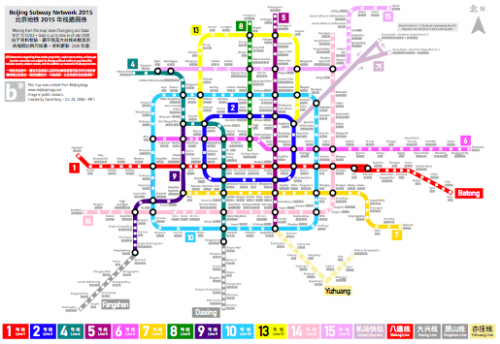Taking the train in China is a relatively cheap, convenient, and low-carbon way to travel. One oddly enjoyable part of train travel is shopping for snacks before the trip so you don’t have to buy the expensive and unappetizing train food. This is the one time that I have no qualms about eating instant noodles and processed, packaged snacks. In preparation for the 18-hour (actually, 20-hour due to delays) train ride from Shanghai to Shenzhen, I bought a seemingly harmless package of dried seaweed. When I spotted it in the grocery store, memories of childhood flooded into my mind – the puckering feeling of the salty, dried seaweed as it touched my tongue, the flood of flavor as it melted onto the roof of my mouth, the spiciness that lingered on my lips after the seaweed had disappeared into my belly – and I had to have it:
Tag: public transport
Beijing Subway and Urban Planning
Note: Read more about Curitiba’s wise urban planning in Natural Capitalism by Amory Lovins, pages 288-308 (full text available on-line). I promise this blog isn’t an advertisement for Mr. Lovins, I just really like that book.
Beijing’s subway system is, by many measures, a convenient and well-run public transport system. At two yuan (about 30 cents) per ride, it is very affordable by Chinese standards. Its average daily ridership is over 5 million (serving a population of 22 million), and its 100+ stops on nine lines render most places in the downtown area accessible with an additional 15 yuan ($2.00) cab ride. In comparison, New York City’s subway system has an average daily ridership of 5.2 million (serving a population of 8.3 million), 400+ stops and 26 lines.
By the year 2015, Beijing plans to double the number of lines to 18, with a total of 400+ stations (see map above). Daily ridership is estimated to grow to 8 million. All of this sounds like pretty good planning, right? Continue reading

